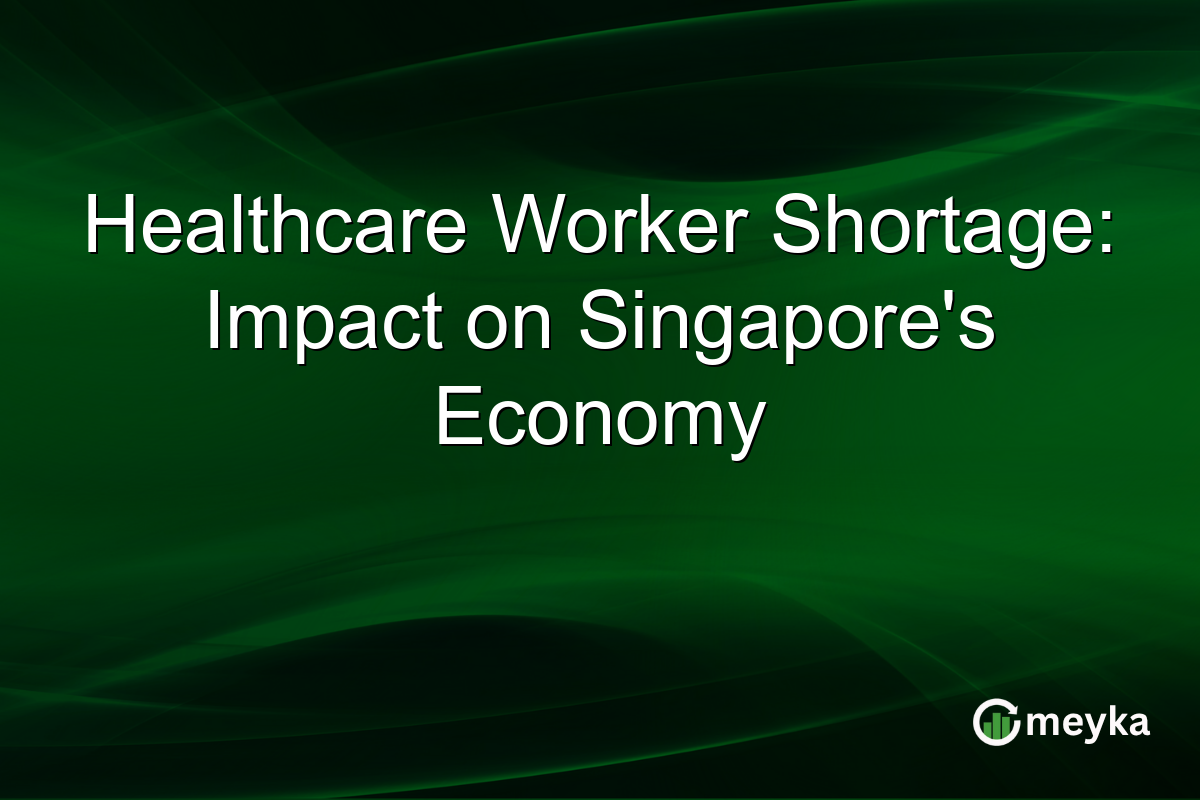Healthcare Worker Shortage: Impact on Singapore’s Economy
The healthcare worker shortage in Singapore is emerging as a significant challenge, impacting both the healthcare system and the country’s economy. This crisis, characterized by a sharp increase in keyword searches, underscores the urgent need for effective solutions to mitigate economic strains arising from healthcare inefficiencies. As the demand for healthcare services grows, understanding the implications of this shortage is crucial for policy makers and the public alike.
The Scope of Singapore’s Healthcare Crisis
Singapore’s healthcare system is facing a critical shortage of workers, particularly nurses. This shortage aligns with global trends but poses unique challenges for Singapore due to its rapidly aging population. The 2021 report by the Ministry of Health showed an increasing gap between demand and supply, with predictions of a heightened shortage by 2030.
This issue has sparked a 1,000% increase in online searches related to the crisis, reflecting widespread concern. The shortage affects not only patient care but also the country’s economic stability. With fewer workers, healthcare facilities face operational challenges, affecting overall efficiency and increasing costs.
The Economic Impact of Nurse Shortage
The economic impact of the nurse shortage is profound. Insufficient staffing leads to increased hospital wait times, reduced quality of care, and potential economic losses. The reliance on overtime shifts to cover gaps results in higher operational costs for healthcare institutions.
Furthermore, these staffing shortages can ripple across the economy. As healthcare workers face burnout, the risk of attrition increases, exacerbating the shortage. The cost of training new staff and potential impacts on health outcomes add to the economic burden. Addressing this issue is vital for maintaining Singapore’s economic resilience.
Government and Institutional Responses
The Singapore government has acknowledged the healthcare worker shortage, investing in training and recruitment. Initiatives aim to attract foreign healthcare professionals and retain local talent by improving working conditions and offering incentives.
The development of technology-driven solutions, such as telemedicine, is another strategy to alleviate pressure on healthcare resources. However, long-term sustainability requires innovative policy measures and cross-sector collaboration to ensure a robust healthcare workforce.
Read more about the new strategies on training nurses at Singapore General Hospital Uniform Update.
Outlook and Strategic Recommendations
Moving forward, enhancing the attractiveness of healthcare professions is essential. This involves not just better pay but also improving job conditions and opportunities for career advancement.
Singapore’s healthcare institutions must also embrace technology and flexible staffing models to manage demand fluctuations. Collaborative efforts between government, educational institutions, and the private sector can create a dynamic workforce, ensuring Singapore is well-equipped to handle future healthcare demands.
For further insights, consider the implications of recent events described in Yahoo Singapore News.
Final Thoughts
In conclusion, the healthcare worker shortage in Singapore presents a multifaceted challenge that requires urgent attention. Addressing this crisis effectively involves not only increasing workforce numbers but also enhancing the overall healthcare system’s resiliency. By leveraging technology and strategic policy adjustments, Singapore can mitigate the economic impact of this shortage. Collaborative approaches will ensure both the sustainability of healthcare services and economic stability. The proactive management of this crisis not only safeguards community health but also fortifies the national economy against future adversities.
FAQs
The shortage is due to various factors, including an aging population, increased healthcare demand, and global competition for talent. These issues are compounded by high levels of burnout and attrition among current healthcare staff.
The shortage leads to higher operational costs and decreased efficiency in healthcare delivery, impacting economic stability. It causes longer wait times and affects patient care quality, which can result in economic losses for the healthcare system.
The government is implementing training and recruitment initiatives to attract foreign healthcare workers and retain local talent. They are also investing in technology to improve resource allocation and reduce the strain on healthcare facilities.
Disclaimer:
This is for information only, not financial advice. Always do your research.






